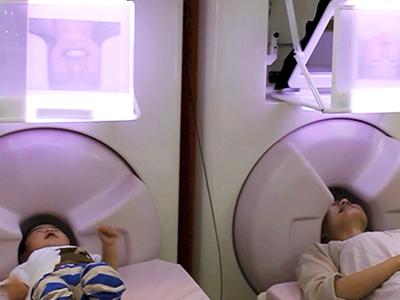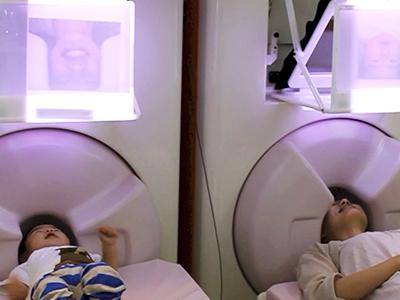
Credit: Kanazawa University
Special activities in the brains while mother and her child with autism spectrum disorder are gazing each other have been discovered by the research team of Kanazawa University together with the research team of Osaka University. The teams used a very special equipment based on magnetoencephalography (MEG) to make three scientifically important discoveries.
- Brain activities upon gazing each other are low in the case of child with serious autism spectrum disorder.
- While the activities in child's brain with autism spectrum disorder are low, the activities in mother's brain are also low.
- When mother makes a movement such as nodding in response to her child, the activities in mother's brain are high.
This study was able to be performed thanks to the equipment development. MEG can detect electrical activities of the brain in a non-invasive and hence non-harmful manner, by the utilization of superconducting sensor technology, with very high time and space resolutions. The researchers have developed an MEG for a child (only one copy in Japan). Furthermore, a very special equipment has been constructed, based on the MEG for a child as above, which can be used for an adult and a child simultaneously, the equipment available only in Kanazawa in the world.
While a parent and a child are gazing each other, enormous amounts of social information are exchanged in an unconscious manner. That is, reading of the face allows new emotion to emerge, which appears on your own face and affects the other; these interactions continue without cease. Bidirectional interactions are thought to play important roles in the development of child's sociality.
Simultaneous measurements of brain activities while mother and child are gazing each other by the current study are expected to be a big step to elucidation of development of child's social brain.
The article describing the research results was published online in Scientific Reports, an American journal, on Oct. 10, 2016.
###
Media Contact
Takashi Shimizu
[email protected]
81-762-645-963
http://www.kanazawa-u.ac.jp/e/index.html





